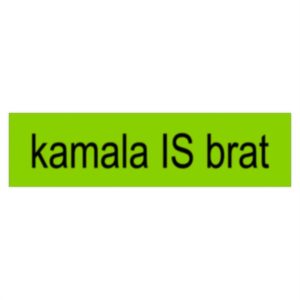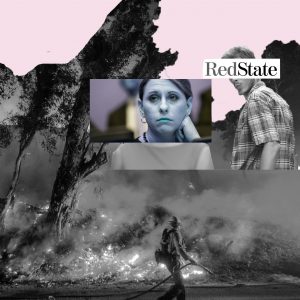
Post-Post Truth
by Clarissa Mayhew | April 3, 2017
When the Oxford Dictionary announced ‘post truth’ as its word for 2016, media around the world were quick to link the term to the improbable political events of the year. Trump’s startling triumph in the American Presidential elections, the success of the Brexit movement in Britain and the rise of nationalist parties across Europe all seemed to be dependent upon a kind of rhetoric in which truth appeared a secondary concern. The term, whose usage has reportedly increased by 2000 per cent over the past year alone, describes discourses in which “objective facts are less influential in shaping public opinion than appeals to emotion and personal belief”. These discourses are, however, neither a new phenomenon nor restricted to the realm of politics — on the contrary, it is possible to see the ‘post truth’ notion as a manifestation of a wider development in the cultural psyche of the West, one that has been noted across the art of the last half century.
Postmodernism is a term that has haunted critical theory since more or less the end of the Second World War. At the heart of postmodernism is a deep rooted scepticism of the validity of any attempt to represent an objective vision of reality. What distinguishes this attitude from cynicism of previous ages— or from the similarly fragmented and confused world modern art depicts— is that the postmodern attitude is not simply a recognition of the lies that pervade a cultural narrative, but a sense that beyond the chaos of conflicting narratives is a void which no Truth fills. Postmodernist thought has, for instance, questioned the nature of history, suspicious of any accounts that claim to explain the past as being simply stories. A shift too has occurred in the way critics think about narratives in art, with seminal texts such as Roland Barthes The Death of the Author overturning assumptions that a work has a single or inherent meaning derived from the artist. Instead all meanings are relative, subjective — they are fundamentally fictions. The ‘post’ in both ‘post truth’ and postmodern signifies not just a chronological lateness but that the specified concept is now redundant and irrelevant. ‘Post truth’ is not merely ‘anti’ truth, but a complete denigration of the very concept of truth.
The causes of this current disillusionment with ‘truth’ are numerous and complicated. One can perhaps identify a link between the postmodern scepticism of cultural narratives, and a more specific concern developing in the 1950s and 1960s with the relationship between language and reality. Following the linguist Ferdinand de Saussure, structuralist thinkers exposed language to be no more than an arbitrary system of signifiers, with words bearing no essential relation to the concepts they describe. Suddenly language — the very foundation of human rational understanding of the world — was revealed to be completely separate from any empirical reality, the product instead of a purely artificial cultural construct.
One can see this fascination with exposing the structures that govern human perception across intellectual fields of the mid to late twentieth century, with linguists to anthropologists all contributing theories. A direct relationship can be drawn between this concern with the constitution of language and an intense reflection on the nature and mechanics of literature. Metafiction, in which the apparatus of the writing is foregrounded and deliberately emphasised, is a classic technique of postmodern writing. In contrast to forms such as the realist novel, which attempt to coax the reader into a state of belief, ready to accept the realities the author proposes, by drawing attention to their ‘written-ness’ metafictional texts alert the reader to their own artificiality. Philip Roth’s The Ghost Writer (1979) is a story about stories: in it, the young writer Nathan Zuckerman, frustrated with the Jewish community’s condemnation of his short stories as ‘anti-Semitic’, rewrites the tale of Anne Frank. Zuckerman appropriates Anne’s story to subvert the sentimentalised narrative post-War American society had imposed upon the diary. His Anne survived and is living in secret in America, engaging in a perverted affair with an older man, deliberately maintaining the illusion of her death so as to maximise the cultural message of the diary. She is aware that her story’s ability to inspire sympathy and regret is dependent upon its tragedy: the lie of her death helps the American public to confront the truth of the Holocaust. The novel consistently corrupts the distinction between reality and fiction: Zuckerman’s father rejects his stories for representing Jews in a negative light, maintaining, to his son’s chagrin, that “people don’t read art — they read about people. And they judge them as such”. Roth undermines the concept of binary truth and falsehood, demonstrating the power of fiction to haze reality.
The sociologist Jean Baudrillard describes a phenomenon of ‘hyperreality’ in which simulations of reality have overtaken the actual. In his seminal text Simulacra and Simulations he introduces the idea that in our post-industrial age signs replace what they are meant to signify — that the two become entirely disassociated. The immense power of branding in capitalist society is an example of the substitution of meaning with self-referential symbols Baudrillard proposes. Items acquire value because of the desirability of their brand and what it represents, i.e. ‘cool’ or ‘money’, completely unrelated to any functional purpose. Consumers are encouraged to emotionally respond to what a brand signifies rather than to the item itself as a physical object. In Don DeLillo’s novel White Noise, Babette is dependent on Dylar, a commercial drug product that promises to abate fear of death but instead leads to side effects that include an “inability to distinguish words from things”. Even after the complete redundancy and even danger of the drug is revealed, the characters continue to use it. It is the myth, the unsubstantiated comforting promise of the authoritative brand name that guides them — not the physical reality of its effect.
The common theme that dominates discussions of both post-truth and postmodernism is the influence of modern technological innovation. Both concepts are inconceivable outside the context of the explosive development of communication technology in the last half century — televisions, the internet, social media. Pop artists like Richard Hamilton rely on pastiche (literally sticking together), combining elements from a range of media sources through collages made up of newspaper clippings, magazine photos and advertisements to reflect an Information Age inundated with images and texts. His famous piece, Just what is it that makes today’s homes so different, so appealing? features a television, a tape recorder and isolated labels from adverts. These are all removed from their original context and combined to represent a domestic scene which demonstrates the all pervasive reach of communication technology and the penetration of its consumerist forces into the private sphere. More recently, the rise of Facebook as the world’s largest publisher has effected an enormous change in the way societies communicate, whether in its spate of ‘fake news’ stories or the ‘echo chamber’ effect of personalized news feeds. Both of these are phenomena that destabilize a user’s view of reality.
Of course, as we see above, it is one thing to note postmodern themes in fiction; it is another startling discovery to find them in real life. Adam Curtis, in his 2016 documentary HyperNormalisation, compares the political strategy of Vladislav Surkov, ex-Deputy Prime Minister of the Russian Federation and current adviser to Putin, with contemporary art. Surkov was a student at the Moscow Institute of Culture, participating in a programme of theatre direction, before entering politics. It was him who proposed and implemented the transition of the Russian Federation into a sovereign democracy. One vocal critic of the Russian state, Peter Pomerantsev, accuses Surkov of reducing the government to “a post modern dictatorship”. In a 2011edition of the London Review of Books, Pomerantsev described the Russian regime as deliberately pursuing “a ceaseless shape-shifting that is unstoppable because it’s indefinable”. The very label”sovereign democracy”can, in its vagueness and paradoxical flexibility, be seen as an example of this “shape-shifting”: the phrase can be twisted to signify and encompass whatever is currently convenient. By continually changing the narrative of what the Russian state represents, Surkov-style politics creates a veil of confusion that renders any opposing movements unable to form a confident attack on the establishment, because they find it impossible to define and pinpoint.
In such a highly verbalised culture, insurmountable contradictions are perhaps inevitable. So much of our present lives are conducted in a virtual reality — the online completely separate from the truth of the physical world. Without the reassuring anchor of objective physical presence, no wonder we are witnessing a society struggling with its own potential hollowness. So what will be the word of 2017? For an age desperately yearning for a modicum of certainty, and a world threatening to disintegrate into undefined irresolution— perhaps Neo Authenticism?
Photo credit: flickr




